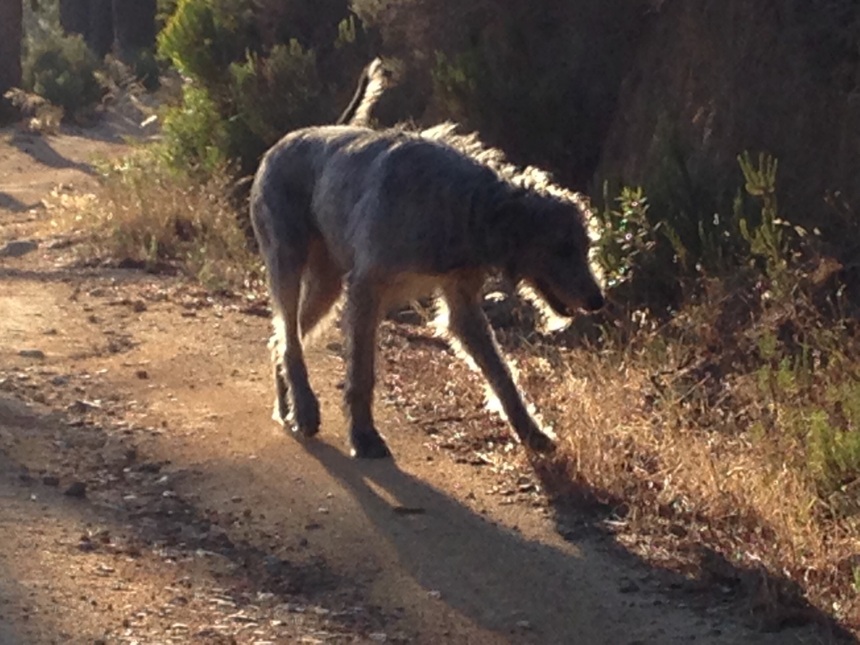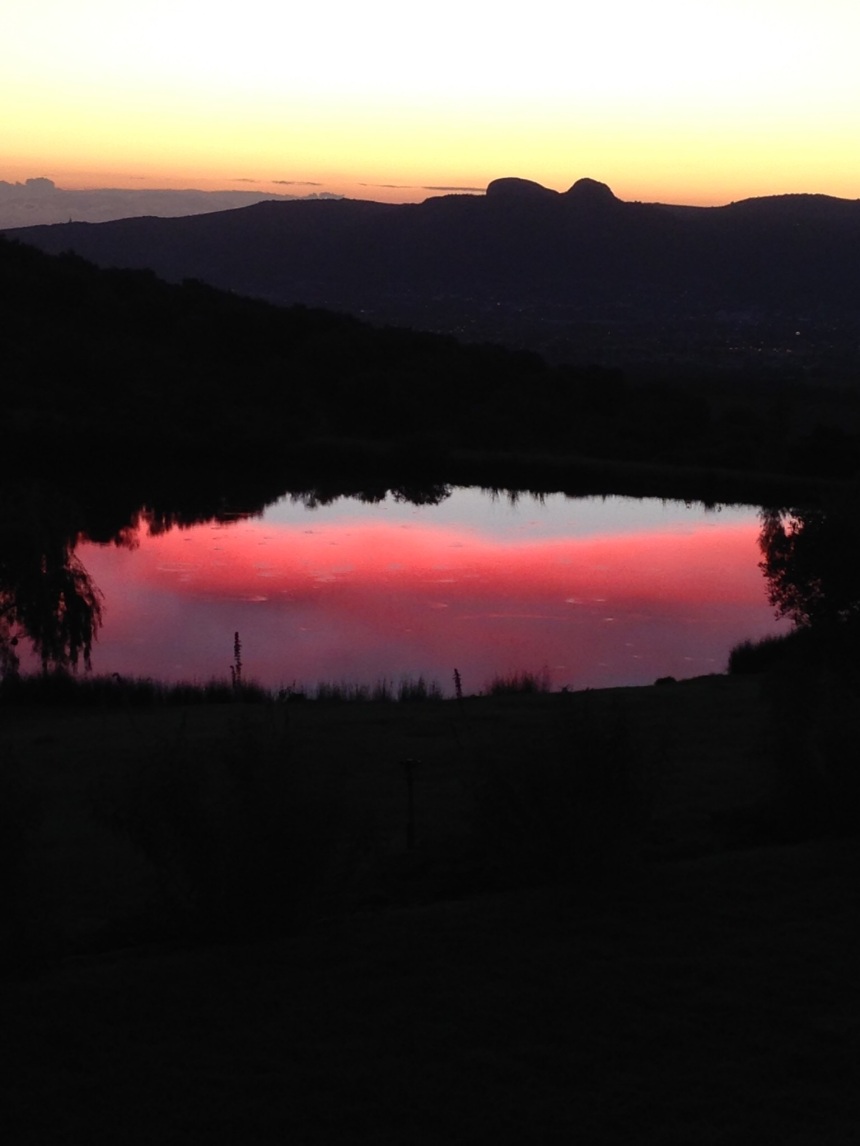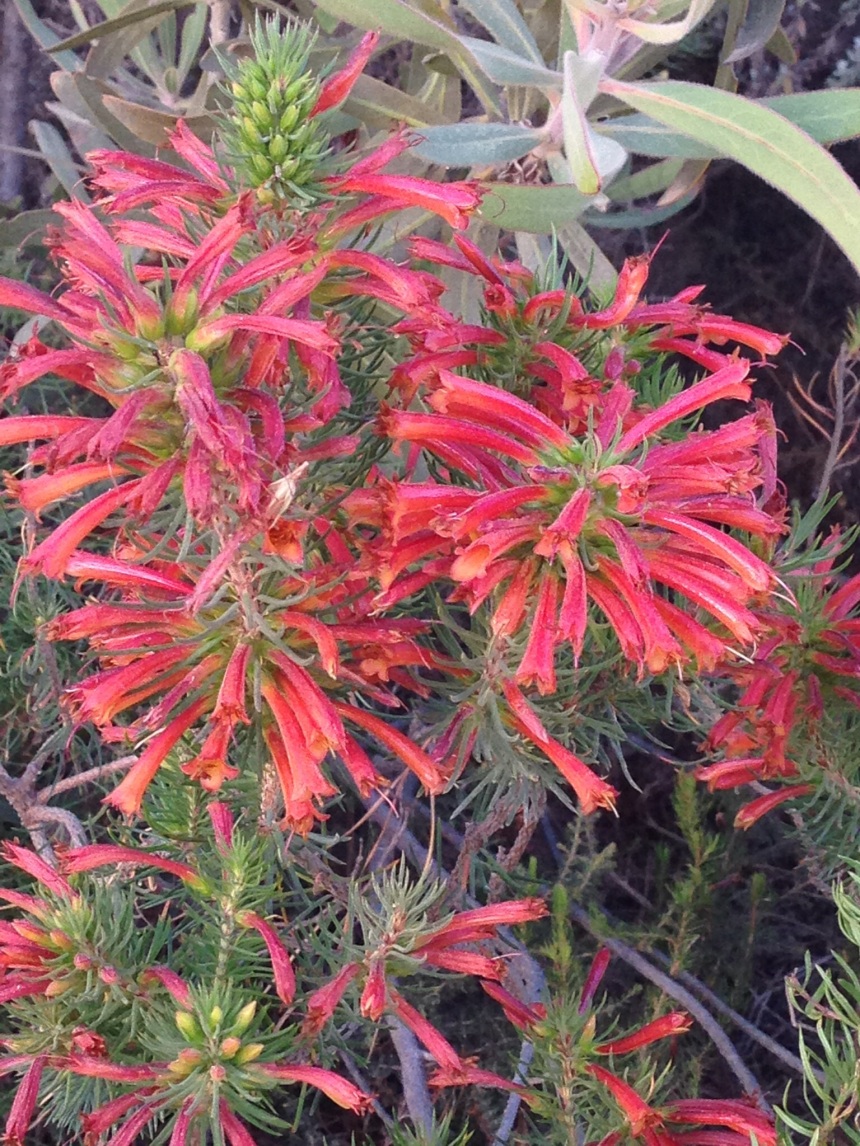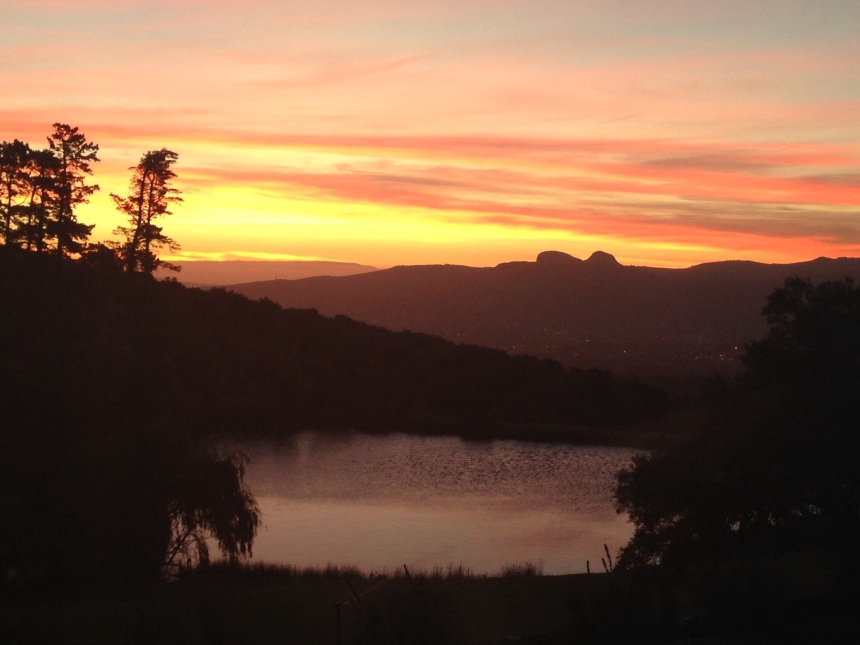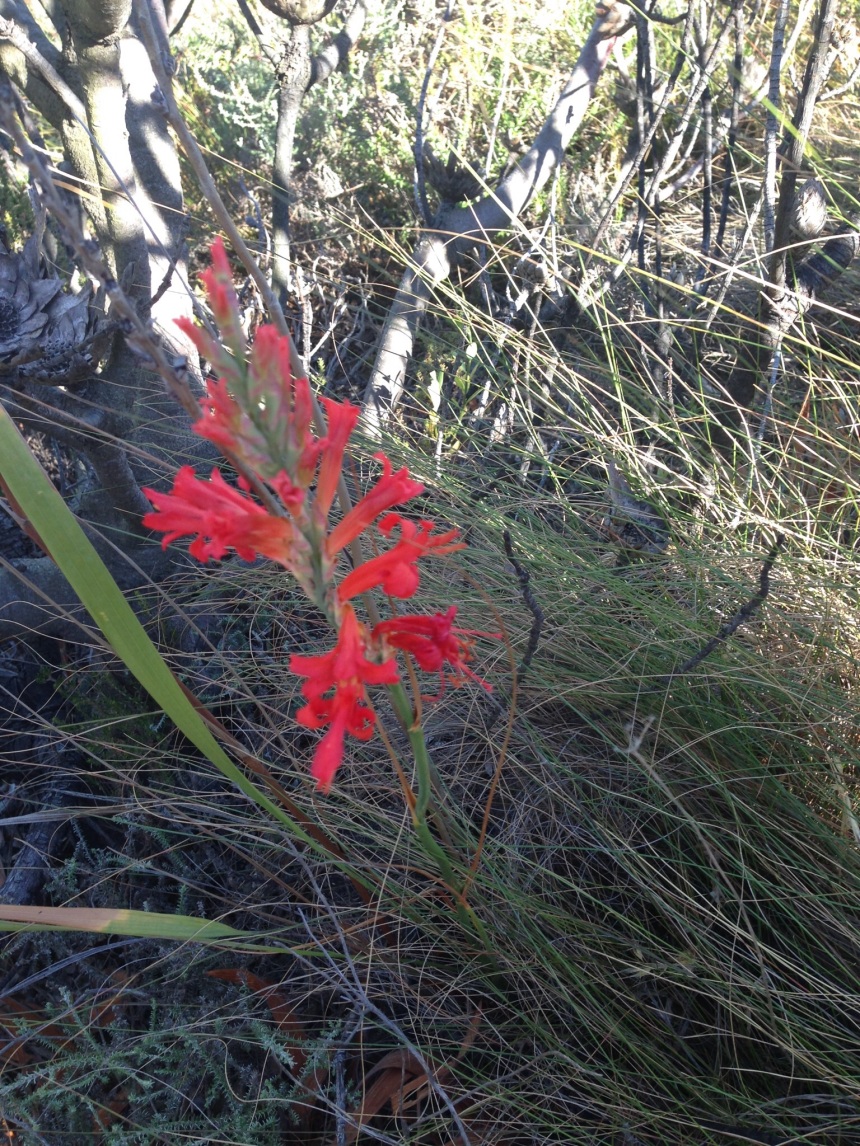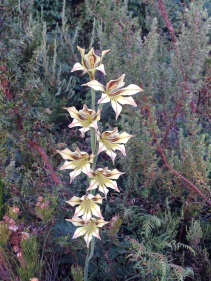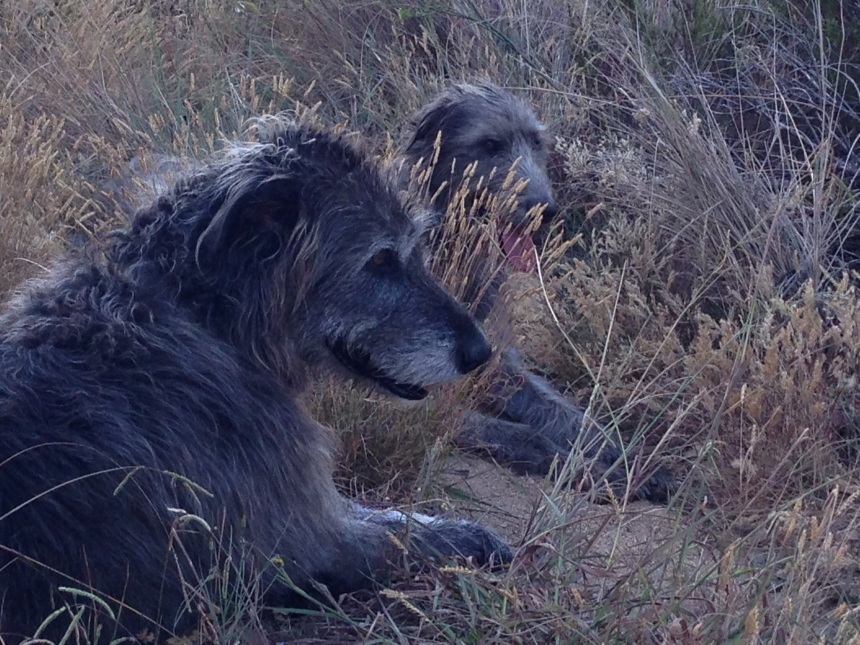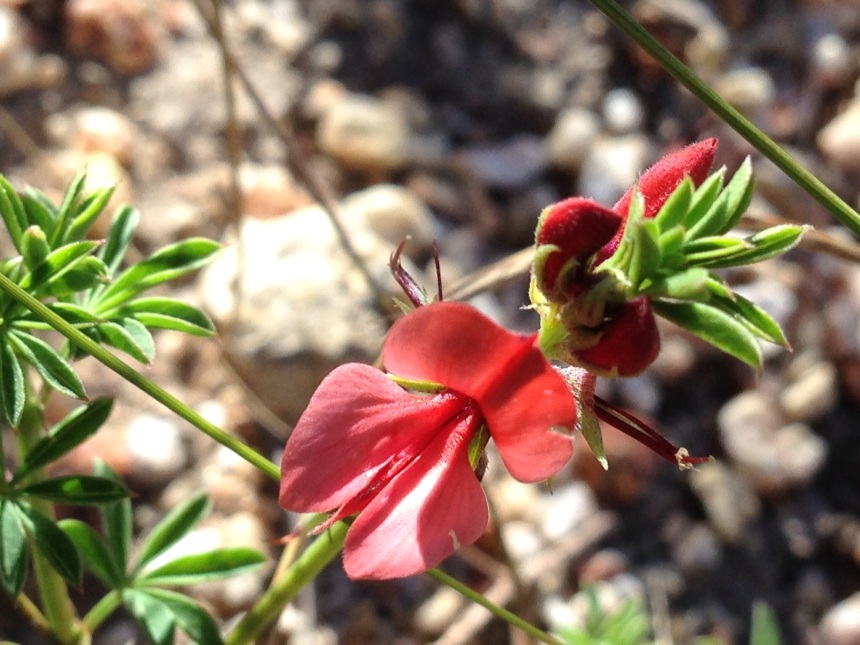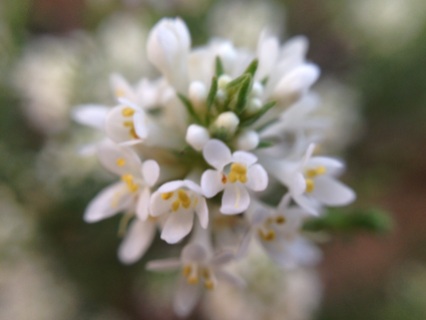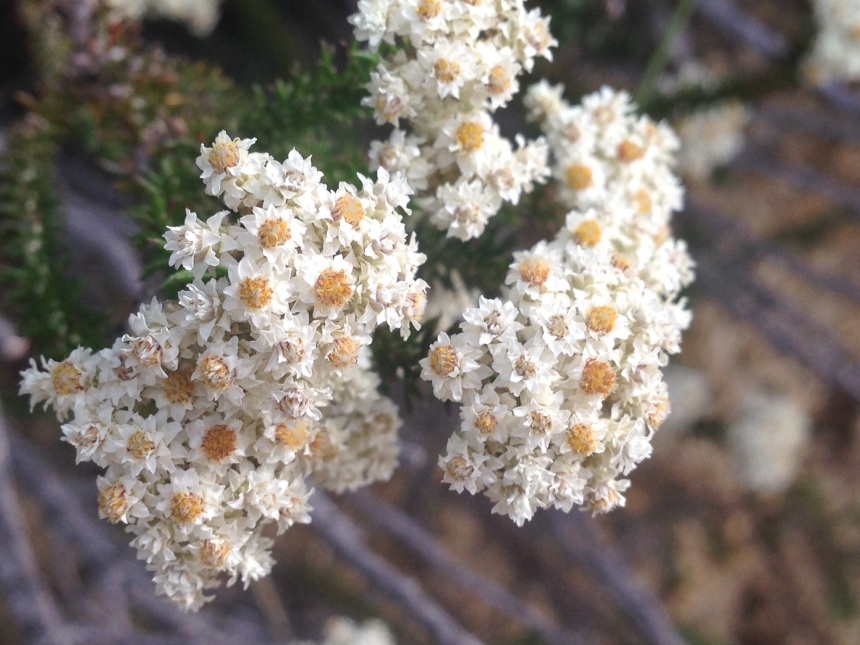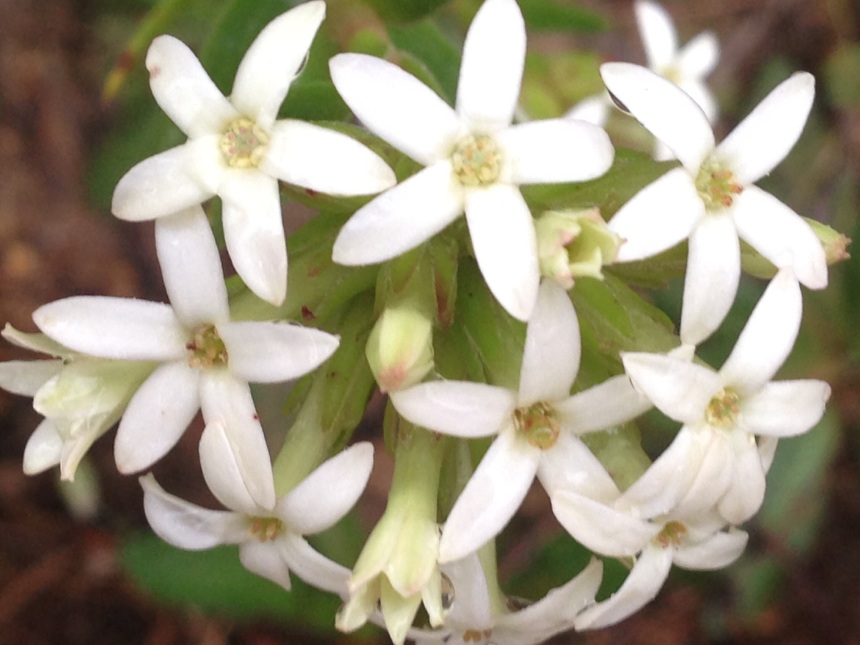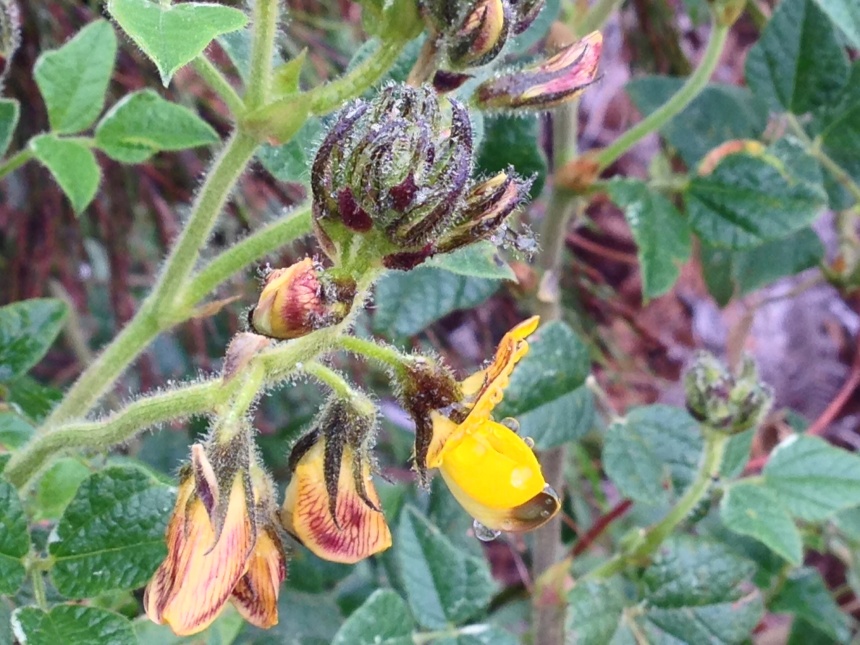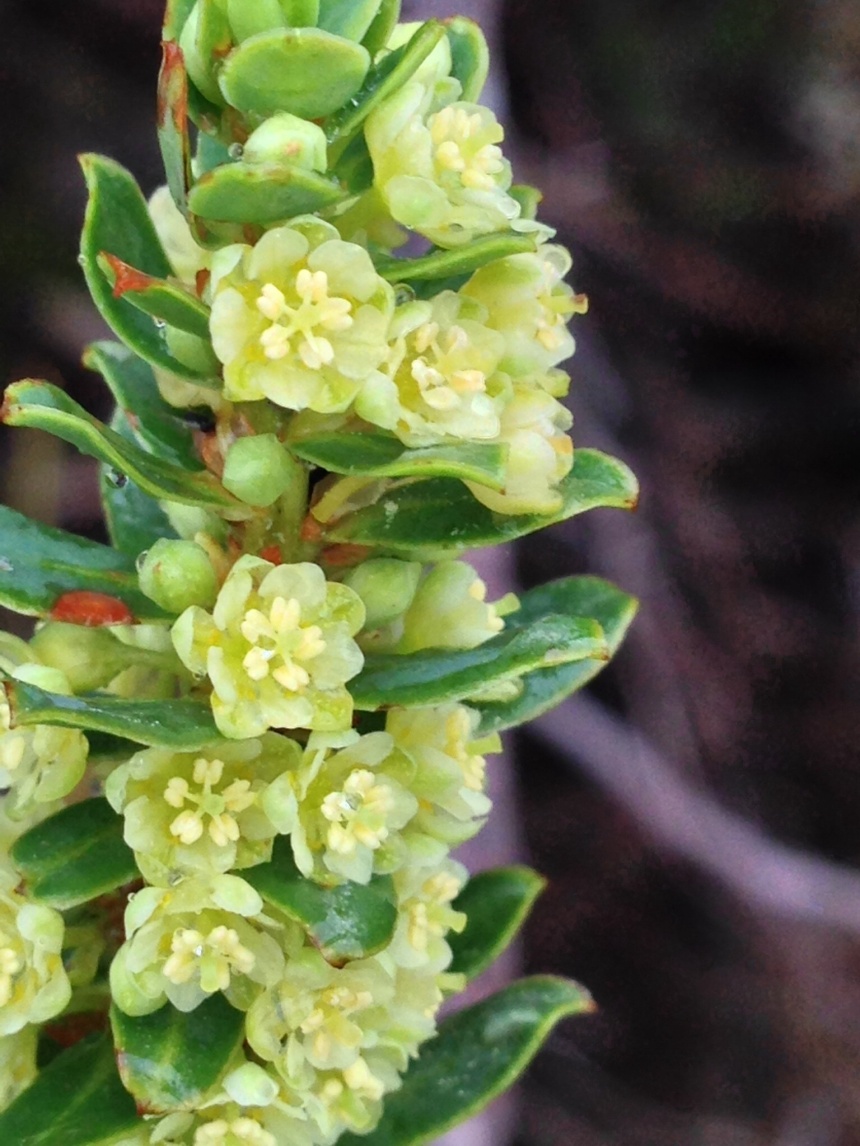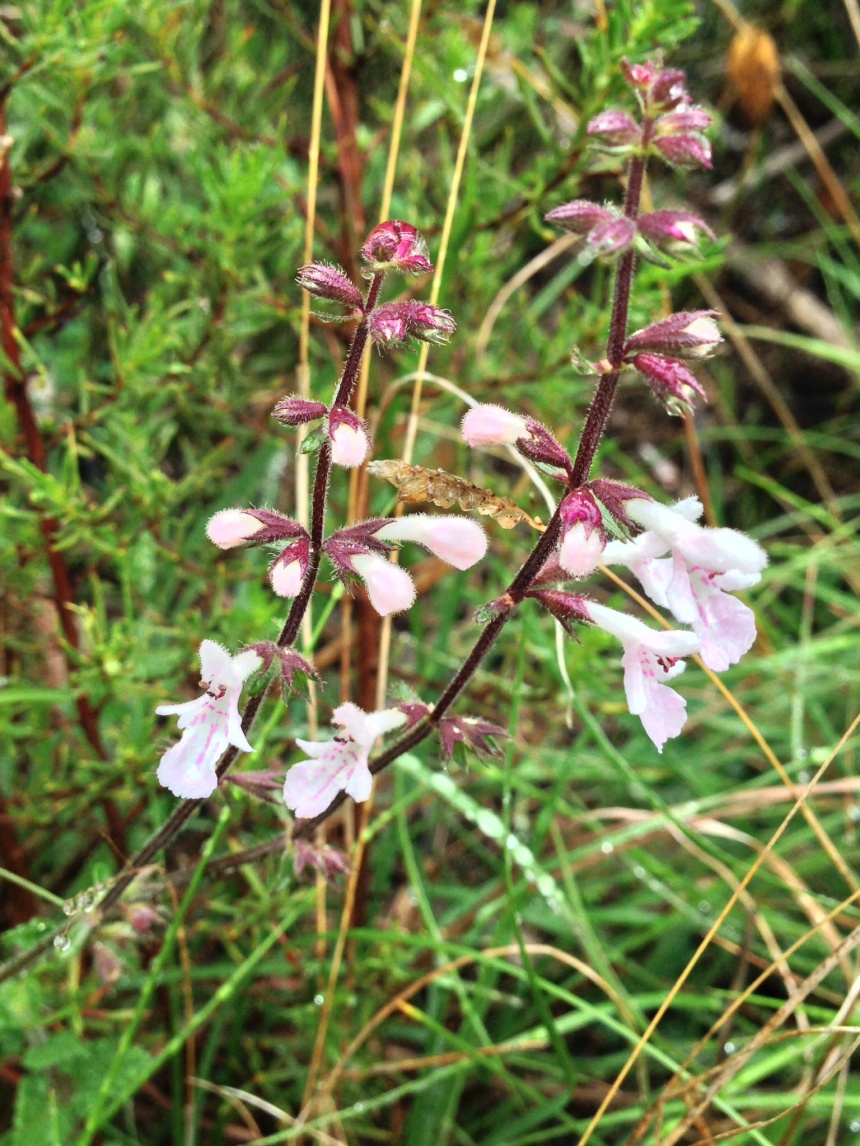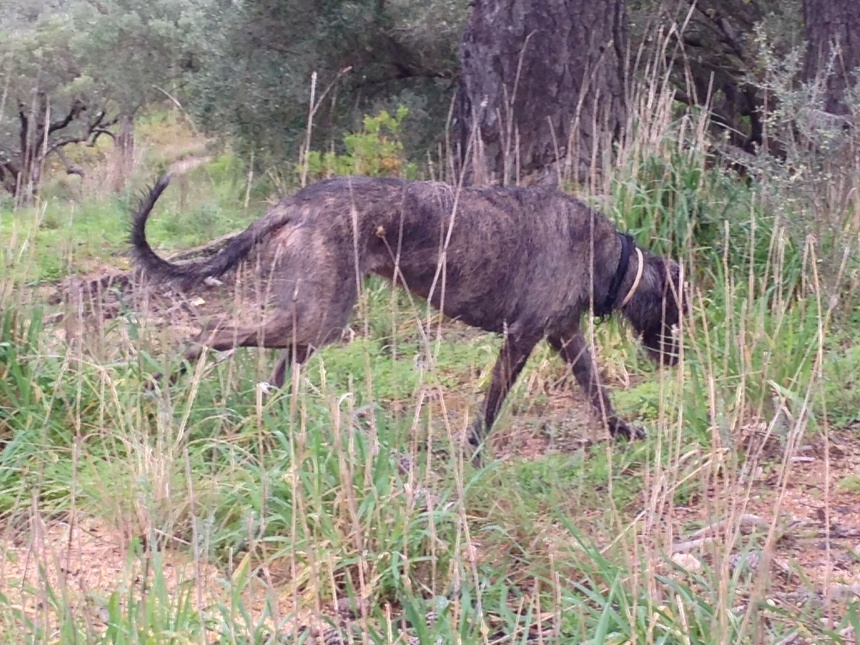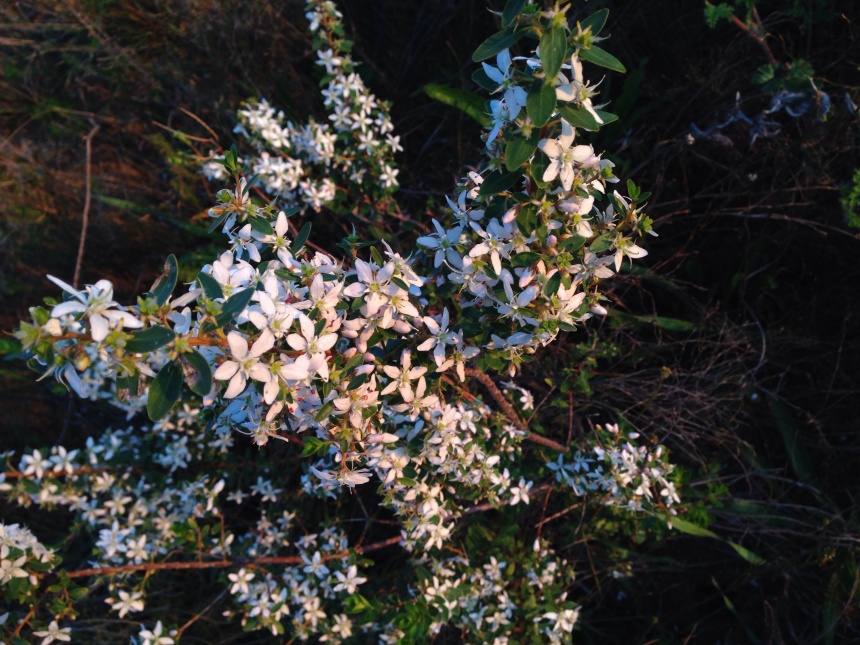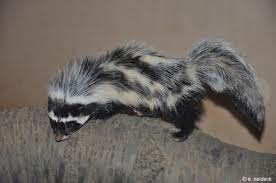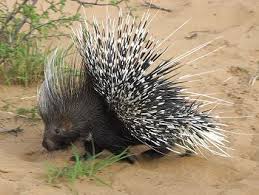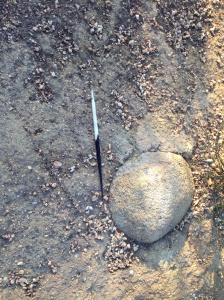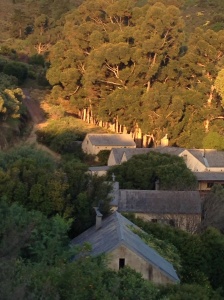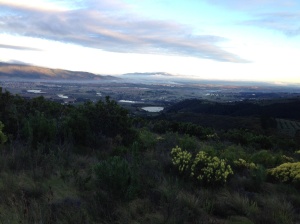I reached a target today. This weekend I’m riding in a competition and I really wanted to lose the extra couple of kilos before the show. I weighed myself this morning. Wow, I actually made my target!
And as I was out running this morning it occurred to me that I’ve never talked about diet. Or, let’s call a spade a spade, dieting. This blog is about the run and the flowers. But why run at all? I saw a brilliant ad once, for Reebok shoes called “Belly gonna get you!” A man was chased around New York city by the fat belly he’d have if he didn’t run. That’s why I run; I’m afraid that belly will get me. I run away from the fat person I don’t want to be. The trouble is, I like to eat. Not in an unconsidered full fat sugar chocolate driven way, more a fine dining, excellent and delicious food kind of way. And as Peter said when I mentioned that his daughter complains that we don’t keep treats in the house, “our treats come in bottles”.
Perhaps it’s time for a flower, captured on this morning’s run, before I continue this little dietary indulgence.
This is an absolute favourite, if only for its splendid name. Not the best photos, they were captured early this morning and I was more focused on the run and my thoughts about weight and fat than flowers. There will be a few of them to come all over the farm and I’ll capture a better shot of this lily named Wachendorfia paniculata.

Wachendorfia paniculata
Back to the diet. All my life I have struggled. My family, on both sides, survived the Irish Famine in the mid-19th century for a reason. If we were horses we’d be called good doers. We do terribly well on terribly little. Most of my cousins have struggled as I have. If you stop the struggle, woah, clothes sizes accumulate with terrifying speed.
So I run away from the fat person I don’t want to be. And as I was running away down the drive this morning I couldn’t resist a shot of this Leucospermum lineare, the Vulnerable, from a baby plant on the drive. This endangered and quite rare member of the protea family is thriving here on the farm.
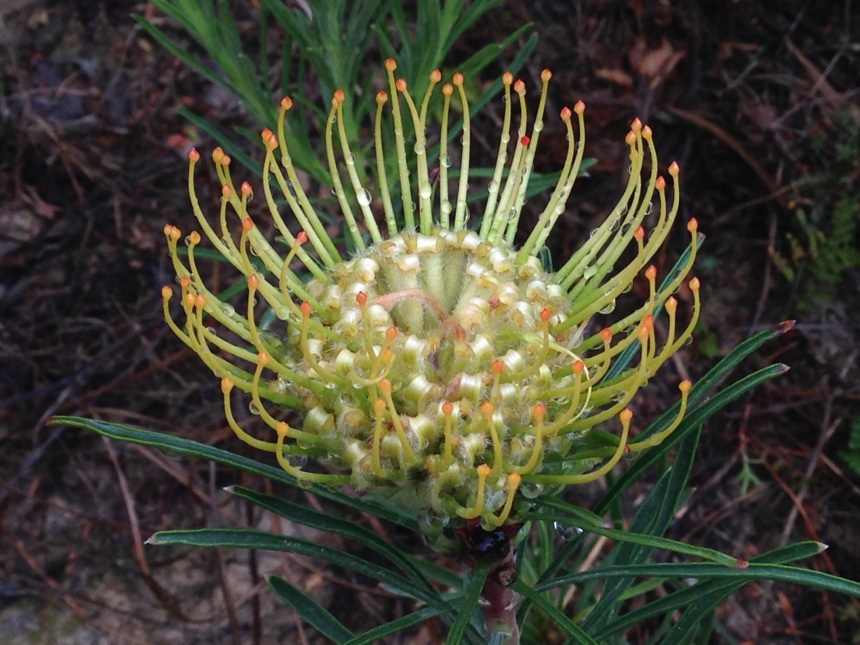
Leucospermum lineare
Here in Cape Town everyone is Banting. This is the name a doctor called Tim Noakes has given his diet which is a kind of super-powered Atkins. High fat, medium protein, very low carb. I think it’s rather revolting but I do have to admit that people who stick to it, really stick to it, religiously stick to it, do lose weight. Some of them have got quite thin. But as he says in his book, if you don’t stick to it, you’ll balloon. Now I’ve tried most diets; I really mean that, you name it I’ve done it; a lifetime of diets. It’s been my constant, rather boring obsession. But one thing I know is that if I’m required to cut out major food groups, I’m not happy. I might lose weight, but I’m not happy. I can tell you from experience that the best diet is abject misery, really proper, grieving kind of misery, like after a break up, or when someone you adore dies. That’s no way to live but unfortunately being happy makes you fat. I believe certain drugs can be fabulous, but again, not a way to live. Smoking was marvellous, but… once again, not a great option for life and I gave it, and control over my weight up when I was 28. I put on that stone that I’ve never really lost. I’ve lost weight on Weightwatchers and on the Dukan diet, but not really on any other, until now. Running is great for controlling weight, but not so much for losing it. Every holiday, every time I travel on business, a sneaky kilo or two is gained and oh, the dread of getting it off. Yet I’m not interested in never having another slice of bread, never baking a cake again, never eating an amazing dinner, all five courses, with absolute pleasure. And I do like a vodka and soda with a splash of Campari after a long day as I make dinner, usually a very healthy dinner during the course of a normal week. And a glass of wine, or two.
So I run. Three times a week, pretty much every week. Sometimes four times. If I run at the weekend I’ll do 5K or 6K, but otherwise it’s 4K. And I do Pilates twice a week. Vainly hoping that I may have my cake and eat it too, with a glass of champagne. Worrying about my weight has probably occupied more of my waking hours than any other single subject. You’d think that all that worry would mean I’d take control and just eat less, but it doesn’t seem to work like that. Those famine genes want feeding, but the famine’s over, so delicious things preferred, please.
In August 2013 I picked up a book, rather randomly, in an airport and read it on the plane. A colleague I’d been working with in Qatar was looking fantastic and told me about this diet. It is called 5:2 and I immediately knew it was for me. The logic is divinely simple. Two days a week you eat 500 calories, that’s 2000 kilojoules. The rest of the time you eat normally. And where before you might slightly overeat on a weekly basis and gradually gain weight, by cutting out 1500 – 2000 calories a week, every week, you gradually lose weight. I’ve always found it easy not to eat for a day, it’s following dietary restrictions day after day after day that I struggle with, especially with a lifestyle where we travel a lot, socialise a good bit and love to eat out. Never mind the “treats in a bottle”. The book also described huge health benefits that the diet provides – when your body doesn’t have to worry about digesting food, it finds all sorts of useful repair jobs to do instead. Intermittent fasting turns out to be amazingly good for you.
Peter doesn’t do it with me and is kind enough to fend for himself on my “2” days. He doesn’t love it, but he loves the result. It works. I haven’t become skinny but my average has come down. It’s not a totally steady loss. The closest way I can describe it is if you look at a one year chart of the FTSE, the London Stock Exchange. Take out the big plunge this October and that’s been my dieting year. In line with the FTSE, except we want the FTSE to go up and the weight to go down! The point is, the peaks don’t go up and up and the control has been stable. A trip, or a heavy social agenda, a kilo creeps on here and there. With the regular “2” days, once normal eating and exercise are established, off it comes. If I make a bit more effort, it comes off quite easily, never quickly, about 250g to 500g a week. But off it does come. And I don’t have to think about it. Just do it. It took me a while to get used to eating so little so little in a day, but now I enjoy it – I just don’t have to think about food. As for being hungry, that’s ok, for a day. Tomorrow I can have what I want. It’s no longer a diet, it’s a way of life.
I’ve told all my friends about this wonderful diet and only one has really got it, loves it and does it as a habit as do I. I don’t know why, everyone wants to lose, or at least control their weight, and this is the easiest, most pain free way I’ve ever found that achieves just that.
We went out one evening this week to run up the mountain and saw the glory of another sunset. The light in the olive groves, the view of the sun setting behind Paarl Rock with Table Mountain in the background. I may only be running away from my genes but at least I get to run here, on the mountain, with the wolfhounds, in the glory of the light.

Spring light in the olive groves

Sun setting behind Paarl Rock





















